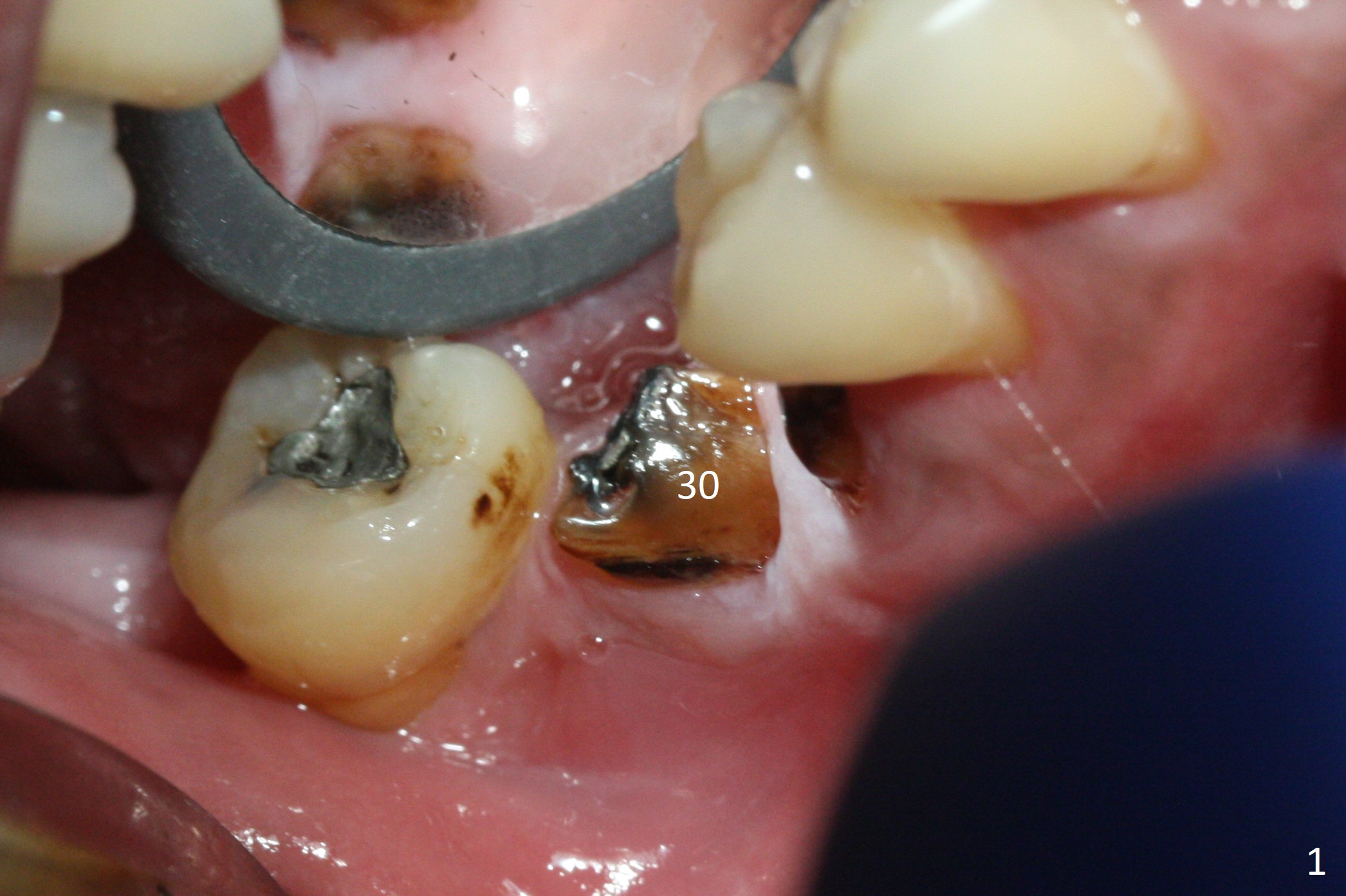
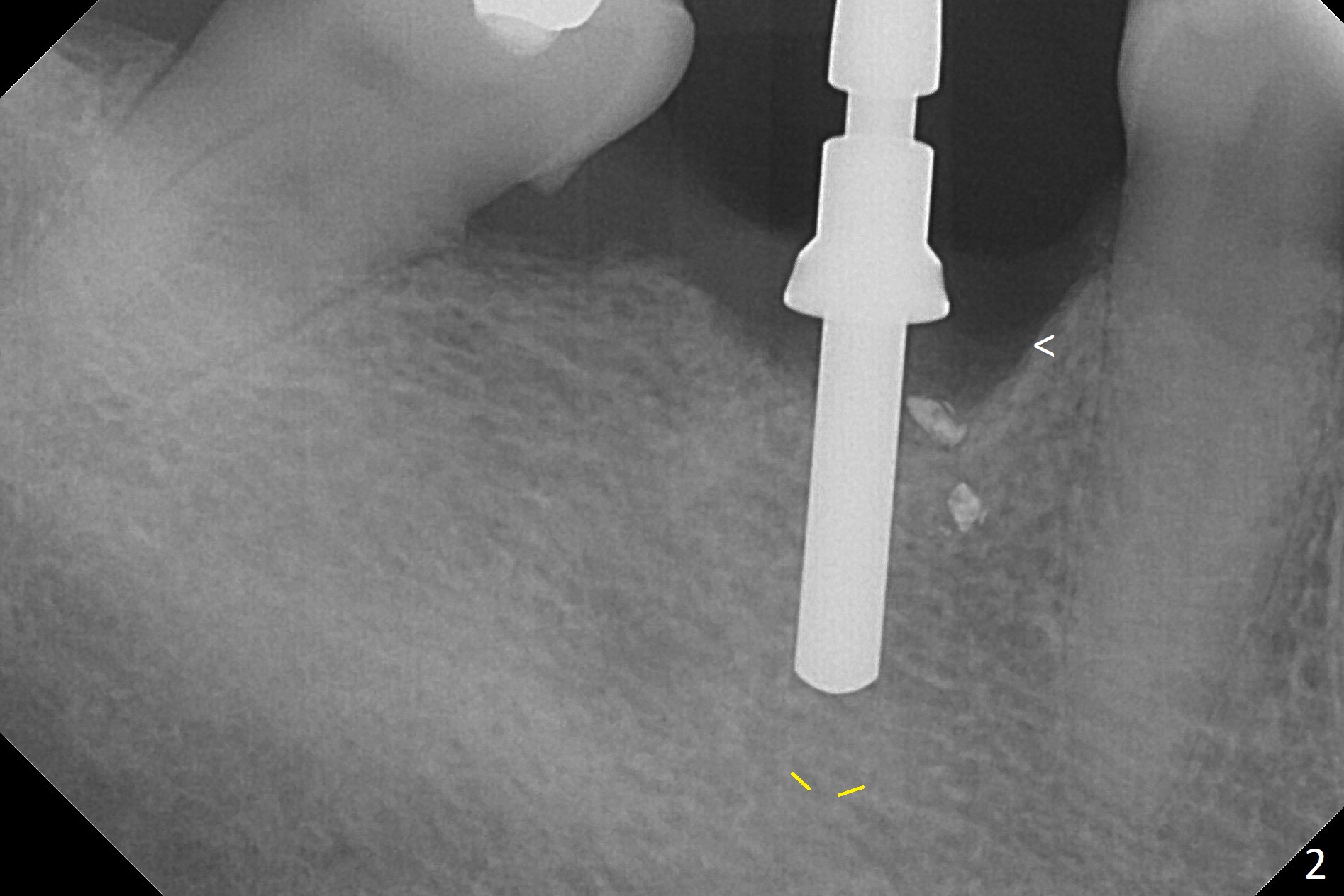
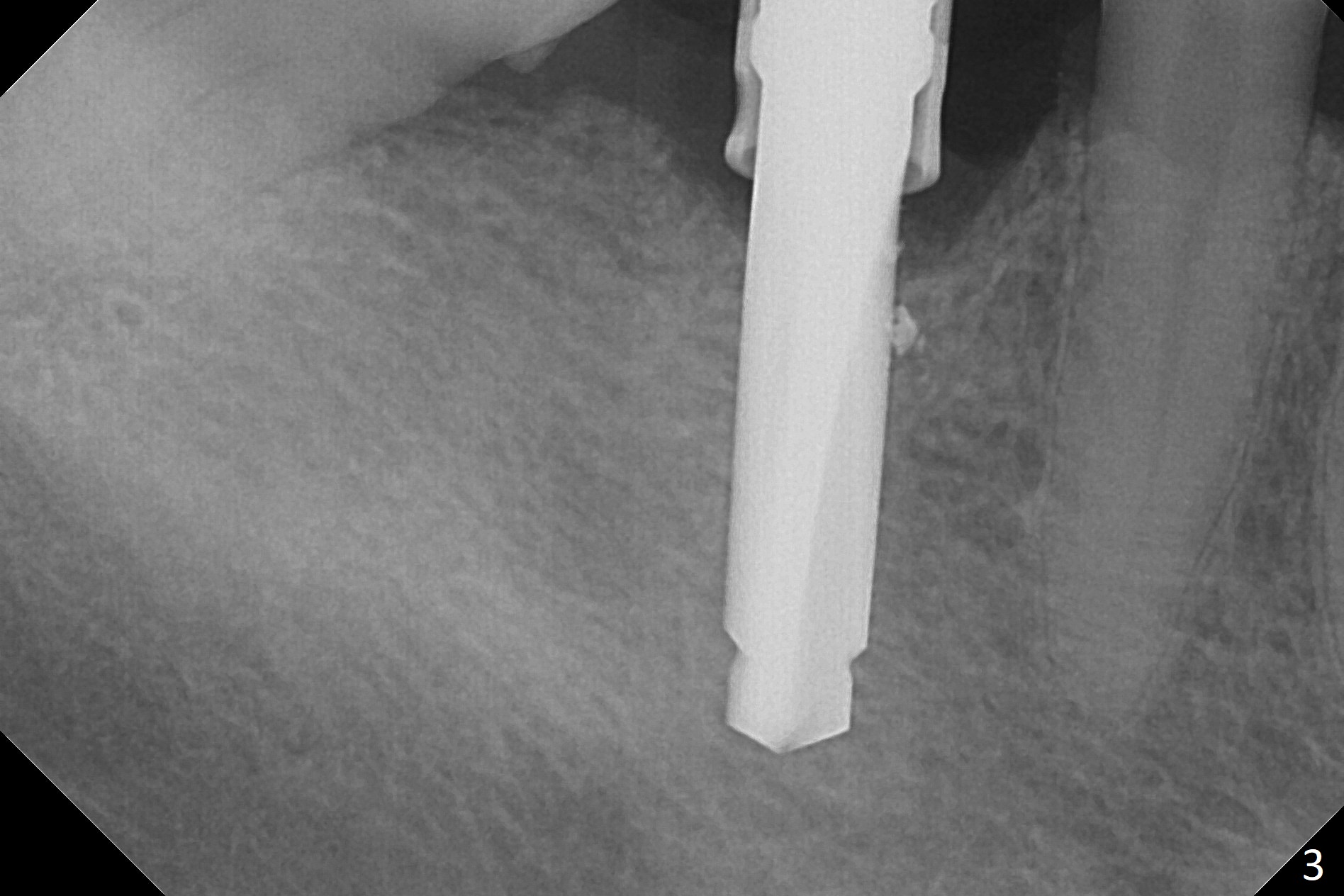
.jpg)
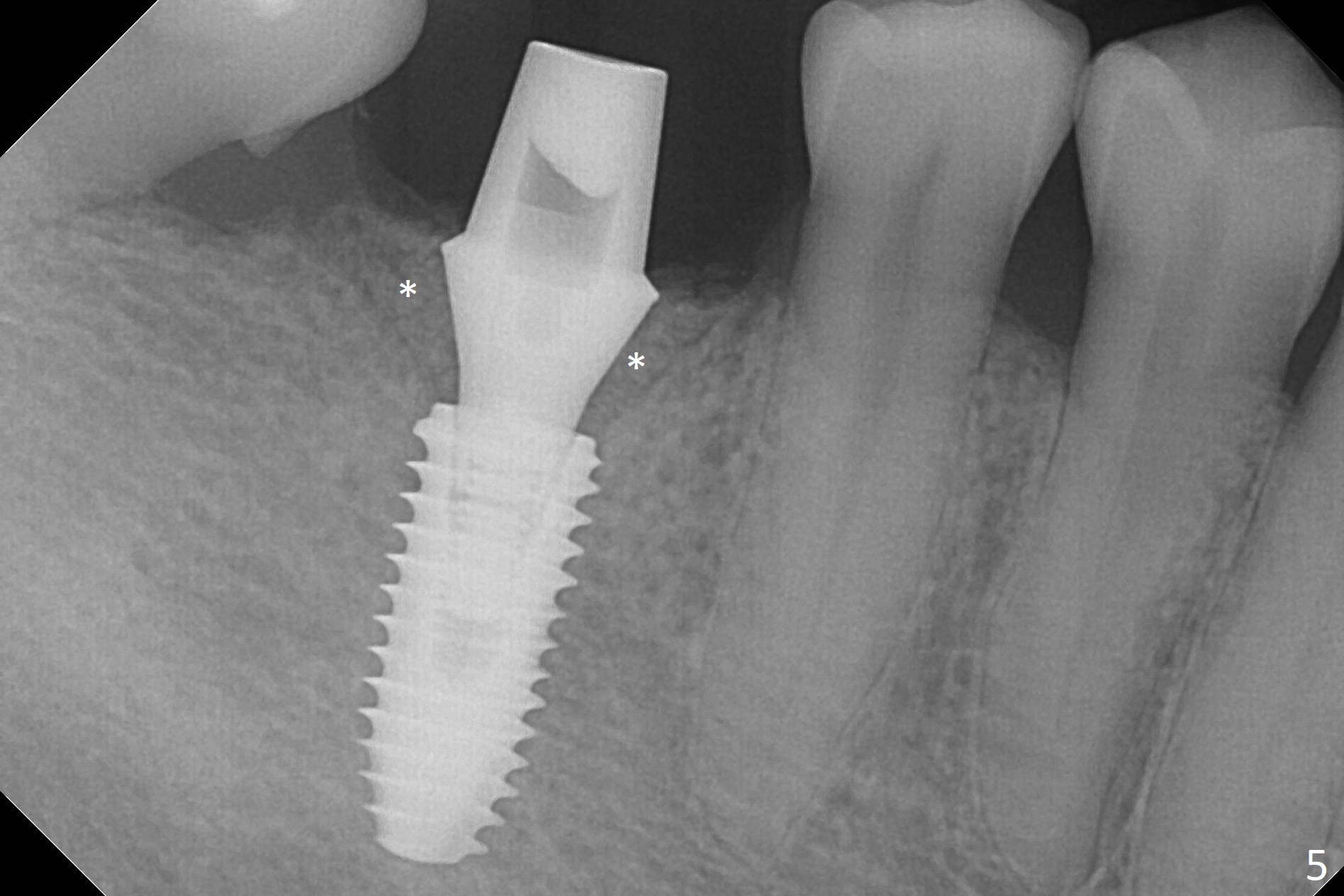
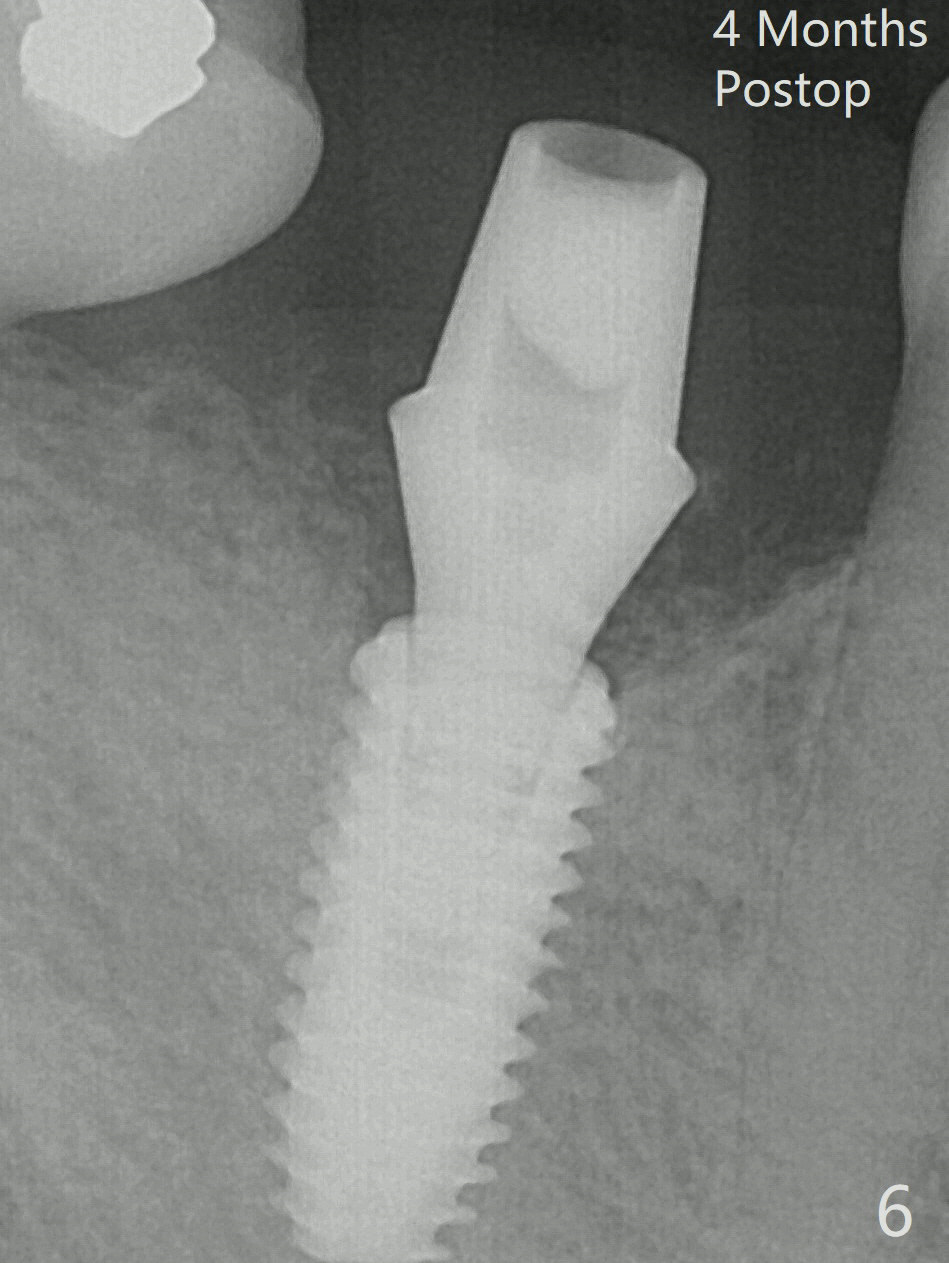
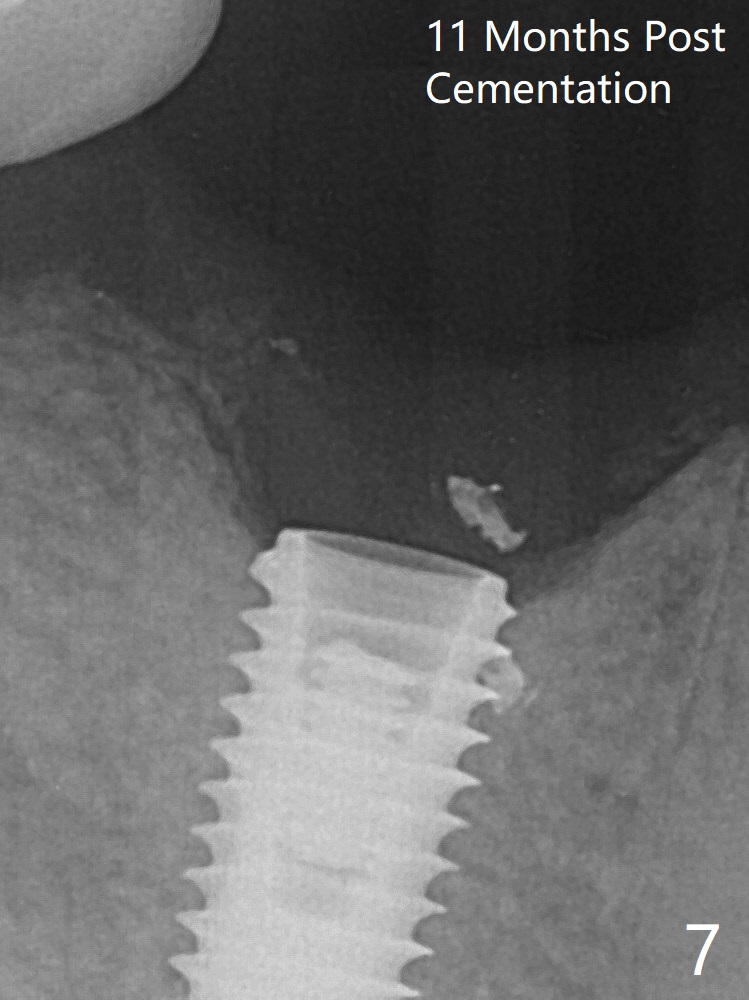
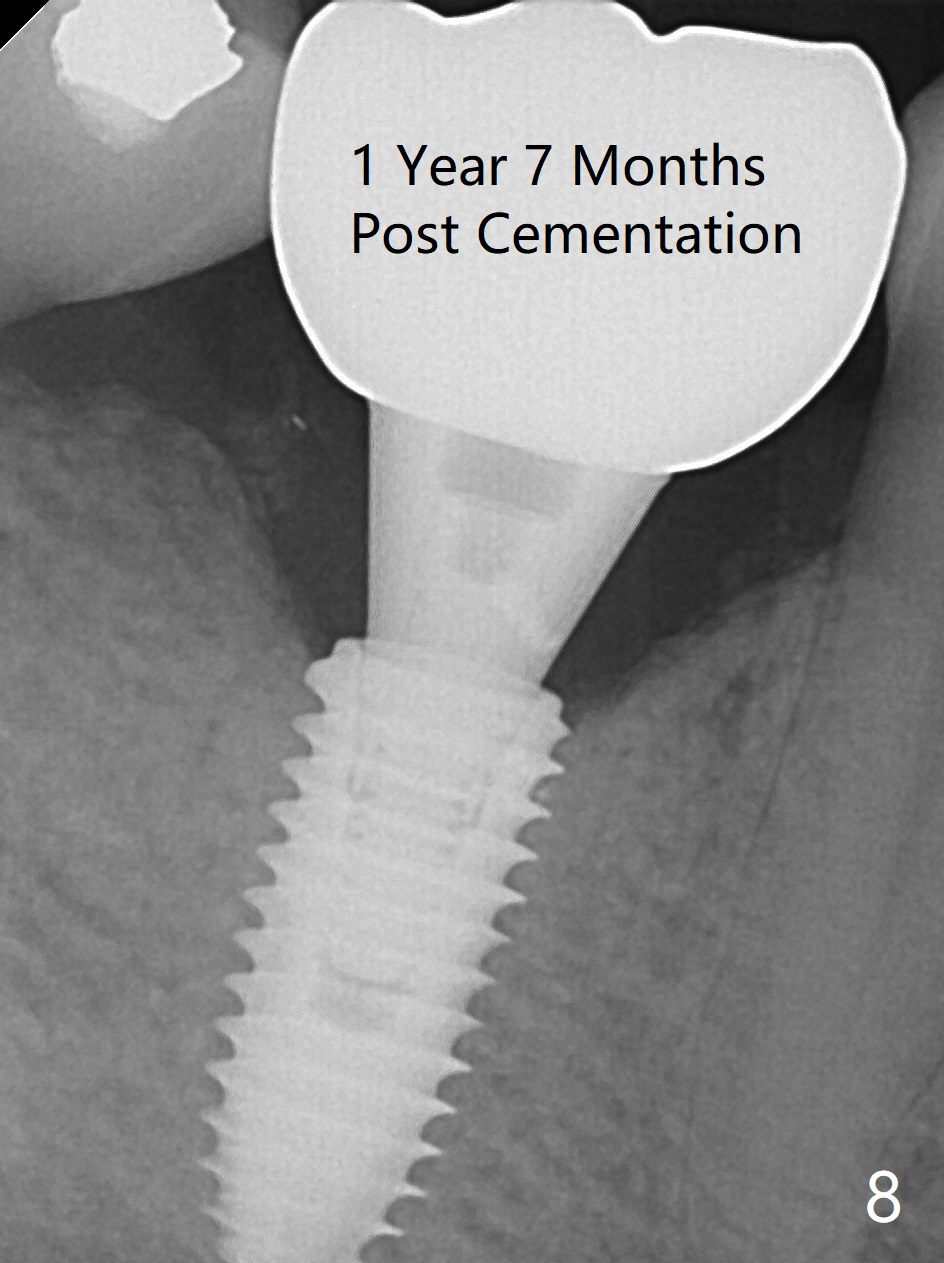
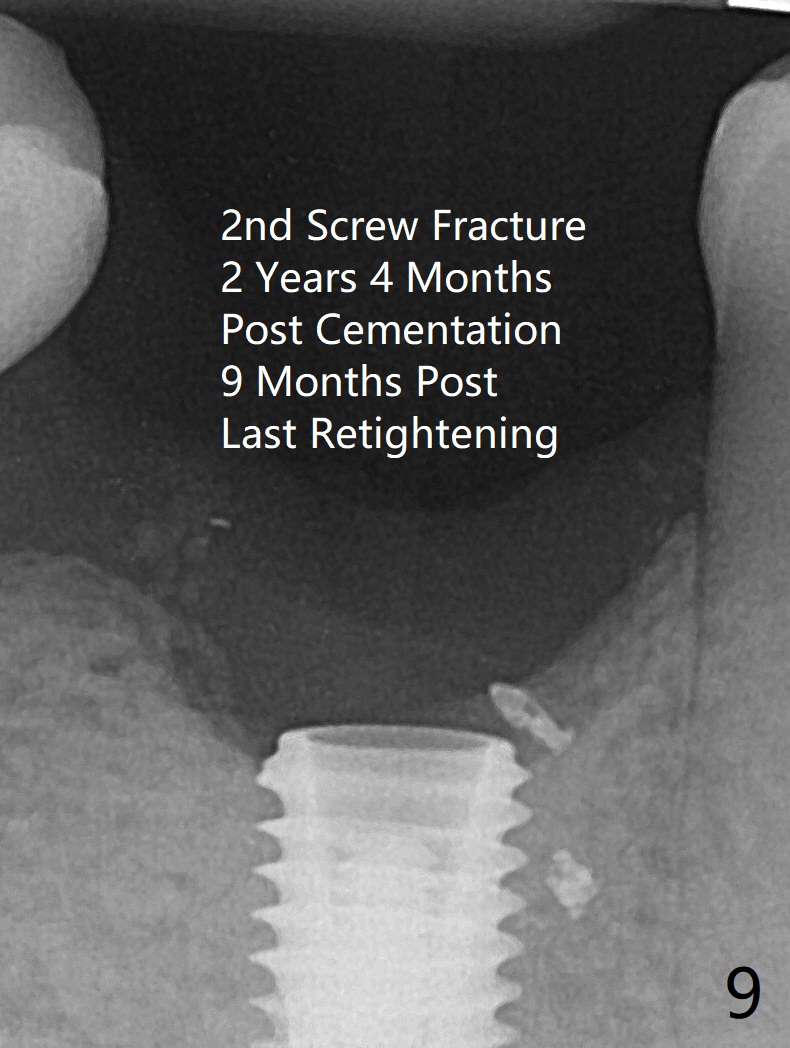
,%202y4m%20post%20cem.jpg)
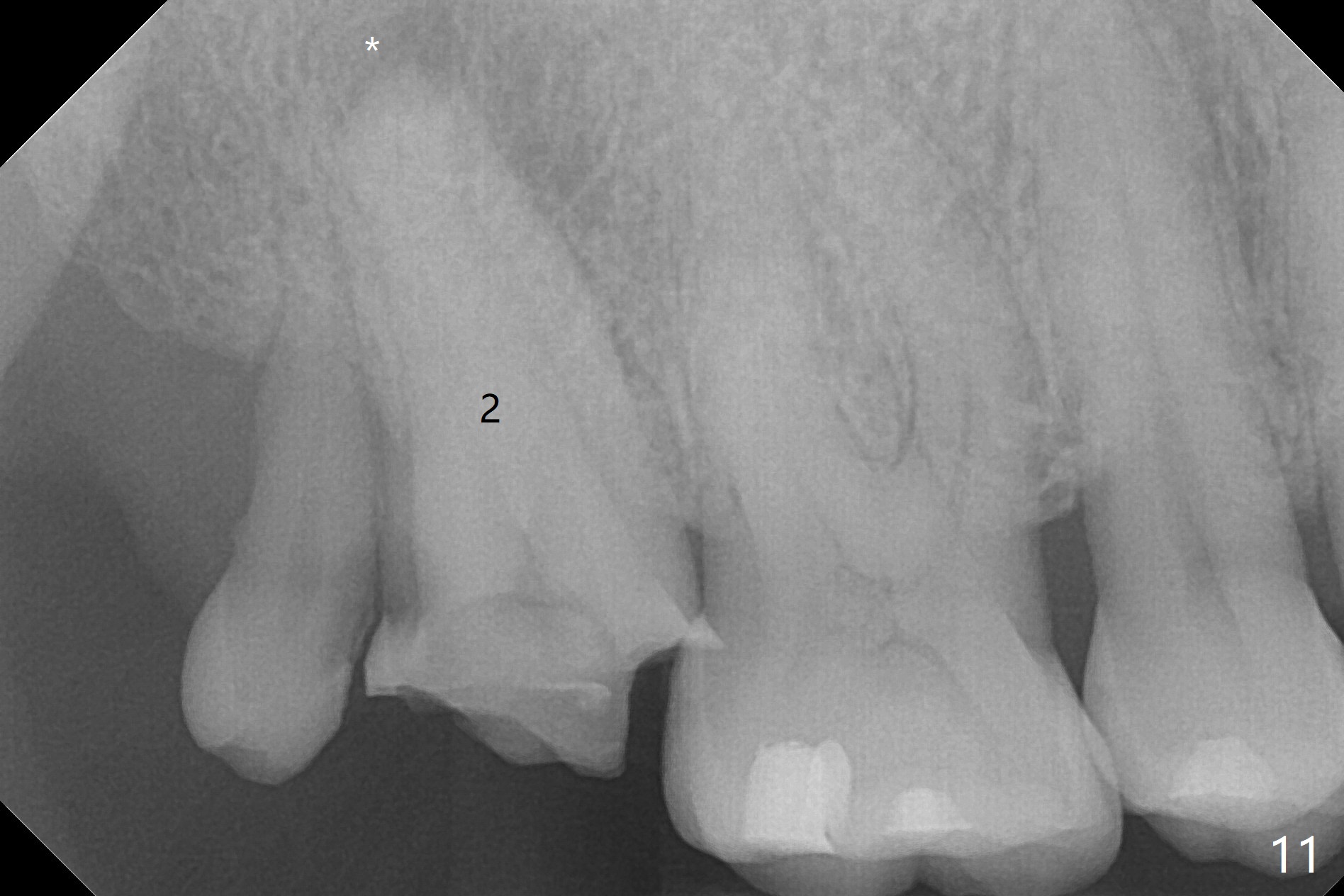
 |
 |
 |
|
.jpg) |
 |
 |
 |
  |
,%202y4m%20post%20cem.jpg) |
 |
|
Discrepancy of Buccolingual Crests
When the residual roots of the tooth #30 (Fig.1) are removed, the buccal crest is found ~ 2 mm apical to the lingual one (Fig.2 <); while the initial depth of osteotomy is 11.5 mm (yellow lines), the parallel pin is 10 mm long. To place a 5x11.5 mm implant at the level of the buccal crest (Fig.4 (>45 Ncm)), subsequent osteotomy depth is 13 mm using the lingual crest as a landmark (Fig.3 (4 mm drill in place)). After insertion of a 5.7x5.5(3) mm abutment, Vanilla Graft is placed (Fig.5 * with 2 mm buccal gap). The abutment with a provisional is loose 4 months postop (Fig.6). The permanent restoration is cemented 6 months postop. The abutment screw is loose and fractured 8 and 11 months post cementation, respectively (Fig.7). The fractured screw seems to be loose within the implant well and is easily re-winded out using Screw Removal Kit (sr-kit.html). When the crown/abutment at #30 is loose 2nd time 1 year 7 months post cementation (Fig.8 taken post retightening), the screw at #19 fractures. The tooth #2 needs a crown. The patient cannot use the anterior teeth, since the teeth #8 and 9 have root fracture. Can extraction and bone graft increase bone height? The screw re-fractures 9 months later (Fig.9). The dislodged crown is sectioned; the abutment is reseated completely (Fig.10) for a new crown. The tooth #2 needs RCT, B-U and crown, while the tooth #1 extraction (Fig.11).
Return to Lower Molar Immediate Implant, Prevent Molar Periimplantitis (Protocols, Table), Armaments, #19 Screw
Xin Wei, DDS, PhD, MS 1st edition 11/16/2017, last revision 02/24/2021